Association of CT-Derived Extracardiac Features and Aortic Annulus Size in Patients Planned for TAVI
Abstract
1. Introduction
2. Methods
2.1. CT Image Acquisition and Measurement
2.2. Patient Selection
2.3. CT images Reconstruction and Measurements
2.4. Statistical Methods
3. Results
4. Discussion
Limitations
5. Conclusions
Author Contributions
Funding
Institutional Review Board Statement
Informed Consent Statement
Conflicts of Interest
References
- Tzikas, A.; Schultz, C.J.; Piazza, N.; Moelker, A.; Van Mieghem, N.M.; Nuis, R.J.; van Geuns, R.J.; Geleijnse, M.L.; Serruys, P.W.; De Jaegere, P.P. Assessment of the aortic annulus by multislice computed tomography, contrast aortography, and transthoracic echocardiography in patients referred for transcatheter aortic valve implantation. Catheter. Cardiovasc. Interv. 2011, 77, 868–875. [Google Scholar] [CrossRef] [PubMed]
- Buellesfeld, L.; Stortecky, S.; Kalesan, B.; Gloekler, S.; Khattab, A.A.; Nietlispach, F.; Delfine, V.; Huber, C.; Eberle, B.; Meier, B.; et al. Aortic root dimensions among patients with severe aortic stenosis undergoing transcatheter aortic valve replacement. JACC Cardiovasc. Interv. 2013, 6, 72–83. [Google Scholar] [CrossRef] [PubMed]
- Panoulas, V.F.; Chandrasekhar, J.; Busi, G.; Ruparelia, N.; Zhang, Z.; Mehilli, J.; Sartori, S.; Lefèvre, T.; Presbitero, P.; Capranzano, P.; et al. Prevalence, predictors, and outcomes of patient prosthesis mismatch in women undergoing TAVI for severe aortic stenosis: Insights from the WIN-TAVI registry. Catheter. Cardiovasc. Interv. 2020, 97, 516–526. [Google Scholar] [CrossRef] [PubMed]
- Reinthaler, M.; Aggarwal, S.K.; De Palma, R.; Landmesser, U.; Froehlich, G.; Yap, J.; Meier, P.; Mullen, M.J. Predictors of clinical outcome in transfemoral TAVI: Circumferential iliofemoral calcifications and manufacturer-derived recommendations. Anatol. J. Cardiol. 2015, 15, 297–305. [Google Scholar] [CrossRef]
- Schultz, C.J.; Moelker, A.; Piazza, N.; Tzikas, A.; Otten, A.; Nuis, R.J.; Neefjes, L.A.; van Geuns, R.J.; de Feyter, P.; Krestin, G.; et al. Three dimensional evaluation of the aortic annulus using multislice computer tomography: Are manufacturer’s guidelines for sizing for percutaneous aortic valve replacement helpful? Eur. Heart J. 2010, 31, 849–856. [Google Scholar] [CrossRef]
- Piazza, N.; de Jaegere, P.; Schultz, C.; Becker, P.; Serruys, P.W.J.S.; Anderson, R. Anatomy of the aortic valvar complex and its implications for transcatheter implantation of the aortic valve. Circ. Cardiovasc. Interv. 2008, 1, 74–81. [Google Scholar] [CrossRef]
- Possner, M.; Vontobel, J.; Nguyen-Kim, T.D.; Zindel Cm Holy, H.W.; Stampfli, S.F.; Zuber, M.; Kaufmann, P.A.; Nietlisprach, F.; MAisano, F.; Niemann, M.; et al. Prognostic value of aortic regurgitation after TAVI in patients with chronic kidney disease. Int. J. Cardiol. 2016, 221, 180–187. [Google Scholar] [CrossRef]
- Abdel-Wahab, M.; Zahn, R.; Gerckens, U.; Linke, A.; Sievert, H.; Schafer, U.; Kahlert, P.; Hambrecht, R.; Sack, S.; Hoffmann, E.; et al. Predictors of 1-year mortality in patients with aortic regurgitation after transcatheter aortic valve implantation: An analysis from the multicentre German TAVI registry. Heart 2014, 100, 1250–1256. [Google Scholar] [CrossRef]
- Schultz, C.J.; Weustink, A.; Piazza, N.; Otten, A.; Mollet, N.; Krestin, G.; van Geuns, R.J.; de Feyter, P.; Serruys, P.W.J.; de Jaegere, P. Geometry and degree of apposition of the CoreValve Revalving System (CRSw) with multislice computer tomography after implantation in patients with aortic stenosis. J. Am. Coll. Cardiol. 2009, 54, 911–918. [Google Scholar] [CrossRef]
- Rodés-Cabau, J.; Pibarot, P.; Suri, R.M.; Kodali, S.; Thourani, V.H.; Szeto, W.Y.; Svensson, L.G.; Dumont, E.; Xu, K.; Hahn, R.T.; et al. Impact of Aortic Annulus Size on Valve Hemodynamics and Clinical Outcomes After Transcatheter and Surgical Aortic Valve Replacement Insights from the PARTNER Trial. Circ. Cardiovasc. Interv. 2014, 7, 701–711. [Google Scholar] [CrossRef]
- Takagi, H.M.D.; Umemoto, T. Prosthesis–Patient Mismatch After Transcatheter Aortic Valve Implantation. Ann. Thorac. Surg. 2016, 101, 872–880. [Google Scholar] [CrossRef]
- Gonska, B.; Seeger, J.; Kessler, M.; von Keil, A.; Rottbauer, W.; Wohrle, J. Predictors for permanent pacemaker implantation in patients undergoing transfemoral aortic valve implantation with the Edwards Sapien 3 valve. Clin. Res. Cardiol. 2017, 106, 590–597. [Google Scholar] [CrossRef]
- Ribiero, H.B.; Nombela-Franco, L.; Urena, M.; Molk, M.; Pasian, S.; Doyle, D.; DeLarochelliere, R.; Cote, M.; Laflamme, L.; DeLarochelliere, H.; et al. Coronary obstruction following transcatheter aortic valve implantation: A systematic review. JACC Cardiovasc. Interv. 2013, 6, 452–461. [Google Scholar] [CrossRef]
- Showkathali, R.; Dworakowski, R.; MacCarthy, P. Valve in valve implantation to prevent acute prosthetic valve migration in TAVI. Indian Heart J. 2015, 67, 598–599. [Google Scholar] [CrossRef]
- Menezes, M.N.; Silva, P.C.D.; Nobre, Â.; Oliveira, E.I.D.; Carrilho-Ferreira, P.; Pinto, F.J. Subacute Retrograde TAVI Migration Successfully Treated With a Valve-in-valve Procedure. Rev. Española Cardiol. 2017, 70, 508–510. [Google Scholar]
- Kim, W.-K.; Schäfer, U.; Tchetche, D.; Nef, H.; Arnold, M.; Avanzas, P.; Rudolph, T.; Scholtz, S.; Barbanti, M.; Kempfert, J.; et al. Incidence and outcome of peri-procedural transcatheter heart valve embolization and migration: The TRAVEL registry (TranscatheteR HeArt Valve EmboLization and Migration). Eur. Heart J. 2019, 40, 3156–3165. [Google Scholar] [CrossRef]
- McDonald, J.S.; McDonald, R.J.; Comin, J.; Williamson, E.E.; Katzberg, R.W.; Murad, M.H.; Kallmes, D.F. Frequency of acute kidney injury following intravenous contrast medium administration: A systematic review and meta-analysis. Radiology 2013, 267, 119–128. [Google Scholar] [CrossRef]
- Chalikias, G.; Drosos, I.; Tziakas, D.N. Contrast-Induced Acute Kidney Injury: An Update. Cardiovasc. Drugs Ther. 2016, 30, 215–228. [Google Scholar] [CrossRef]
- Kellum, J.A.; Lameire, N.; Aspelin, P.; Barsoum, R.S.; Burdmann, E.A.; Goldstein, S.L.; Herzog, C.A.; Joannidis, M.; Kribben, A.; Levey, A.S.; et al. Kidney disease: Improving global outcomes (KDIGO) acute kidney injury work group. KDIGO clinical practice guideline for acute kidney injury. Kidney Int. 2012, 2, 1–38. [Google Scholar]
- Lincoln, J.; Lange, A.W.; Yutzey, K.E. Heart and bones: Shared regulatory mechanisms in heart valve, cartiilage, tendon and bone development. Dev. Biol. 2006, 294, 292–302. [Google Scholar] [CrossRef]
- Reddi, A.H. Bone morphogenetic proteins: From morphogenes to metabologenes. Cytokine Growth Factors Rev. 2009, 20, 341–342. [Google Scholar] [CrossRef] [PubMed]
- Palencia-Desai, S.; Rost, M.S.; Schumacher, J.A.; Ton, Q.V.; Craig, M.P.; Baltrunaite, K.; Koenig, A.L.; Wang, J.; Poss, K.D.; Chi, N.C.; et al. Myocardiaum and BMP signalling are required for endocardial differentiation. Development 2015, 142, 2304–2315. [Google Scholar] [PubMed]
- Galvin, K.M.; Donovan, M.J.; Lynch, C.A.; Meyer, R.I.; Paul, R.J.; Lorenz, J.N.; Fairchild-Huntress, V.; Dixon, K.L.; Dunmore, J.H.; Gimbrone, M.A.; et al. A role for smad6 in development and homeostasis of cardiovasculat system. Nat. Genet. 2000, 204, 171–174. [Google Scholar] [CrossRef] [PubMed]
- Tan, H.L.; Glen, E.; Töpf, A.; Hall, D.; O’Sullivan, J.J.; Sneddon, L.; Wren, C.; Avery, P.; Lewis, R.J.; Dijke, P.T.; et al. Nonsynonymous variants in the SMAD6 gene predispose to congenital cardiovascular malformations. Hum. Mutat. 2012, 33, 720–727. [Google Scholar] [CrossRef] [PubMed]
- Dietz, H.C.; Cutting, C.R.; Pyeritz, R.E.; Maslen, C.L.; Sakai, L.Y.; Corson, G.M.; Puffenberger, E.G.; Hamosh, A.; Nanthakumar, E.J.; Curristin, S.M.; et al. Marfan syndrome caused by a recurrent de novo missense mutation in fibrillin gene. Nature 1994, 352, 337–339. [Google Scholar] [CrossRef]
- Maslen, C.L.; Corson, G.M.; Maddox, B.K.; Glanville, R.W.; Skai, L.Y. Partial sequence of candidate gene for the Marfan syndrome. Nature 1991, 352, 334–337. [Google Scholar] [CrossRef]
- Neptune, E.R.; Frischmeyer, P.A.; Arking, D.E.; Myers, L.; Bunton, T.E.; Gayraud, B.; Ramirez, F.; Sakai, L.Y.; Dietz, H.C. Dysregulation of TGF- beta activation contributes to pathogenesis in Marfan syndrome. Nat. Genet. 2003, 33, 407–411. [Google Scholar] [CrossRef]
- Ng, C.M.; Cheng, A.; Myers, L.A.; Martinez-Murillo, F.; Jie, C.; Bedja, D.; Gabrielson, K.L.; Hausladen, J.M.; Mecham, R.P.; Judge, D.P.; et al. TGF-beta sependent pathogenesis of mitral valve prolapse in a mouse model of Marfan syndrome. Science 2006, 312, 117–121. [Google Scholar]
- Loeys, B.L.; Chen, J.; Neptune, E.R.; Judge, D.P.; Podowski, M.; Holm, T.; Meyers, J.; Leitch, C.C.; Katsanis, N.; Sharifi, N.; et al. A syndrome of altered cardiovascular, craniofacial, neurocognitive and skeletal development caused by mutations in TGFBR1 and TGFBR2. Nat. Genet. 2005, 37, 275–281. [Google Scholar] [CrossRef]
- Najib, M.Q.; Schaff, H.V.; Ganji, J.; Lee, H.R.; Click, R.L.; Miller, D.C.; Chaliki, H.P. Valvular heart disease in patients with osteogenesis imperfecta. J. Card Surg. 2013, 28, 139–143. [Google Scholar] [CrossRef]
- Lincoln, J.; Florer, J.B.; Deutsch, G.H.; Wenstrup, R.J.; Yutzey, K.E. ColVa1 and ColXIa1 are required for myocardial morphogenesis and heart vlave devlopment. Fev. Dyn. 2006, 235, 3295–3305. [Google Scholar]
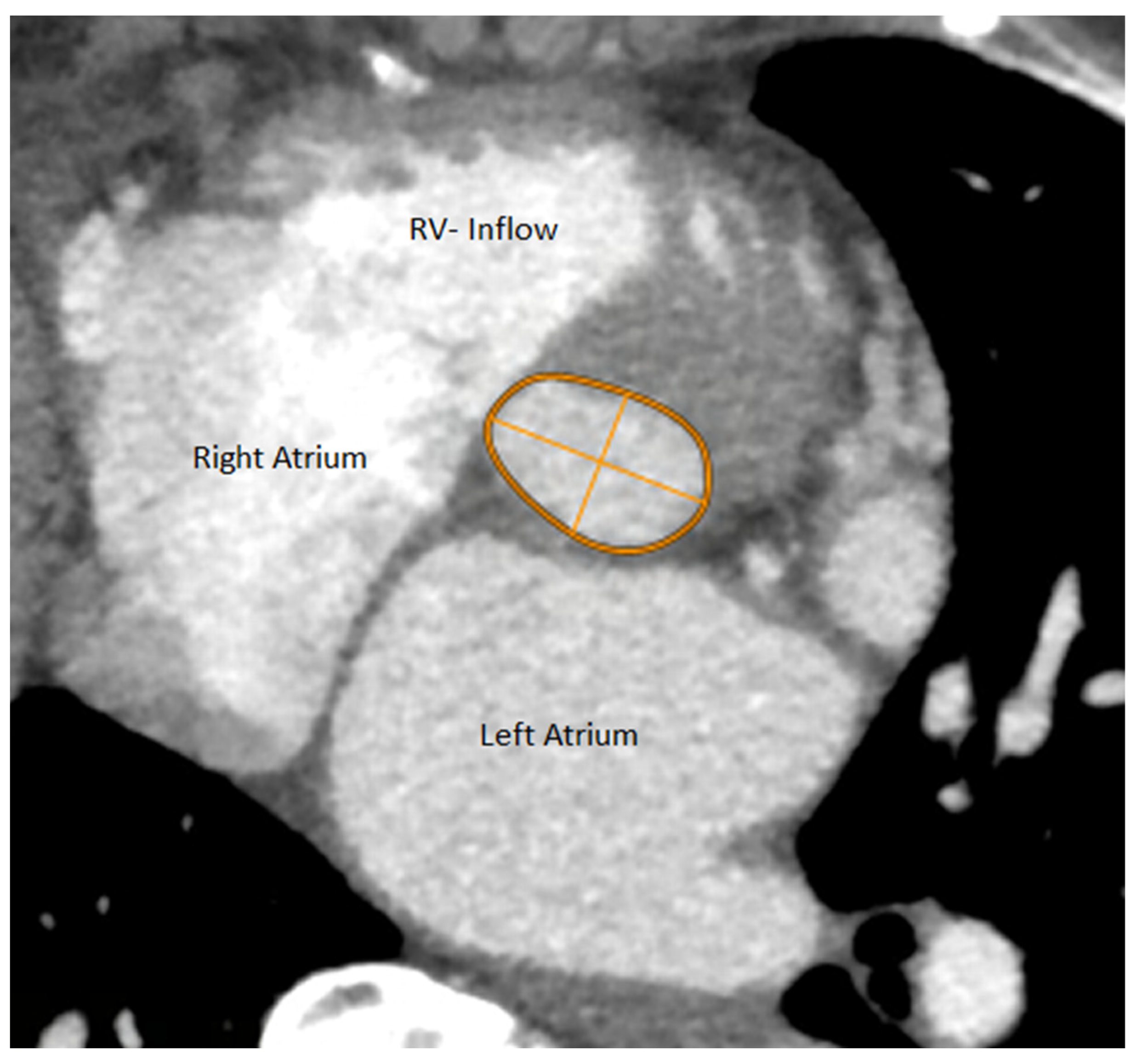
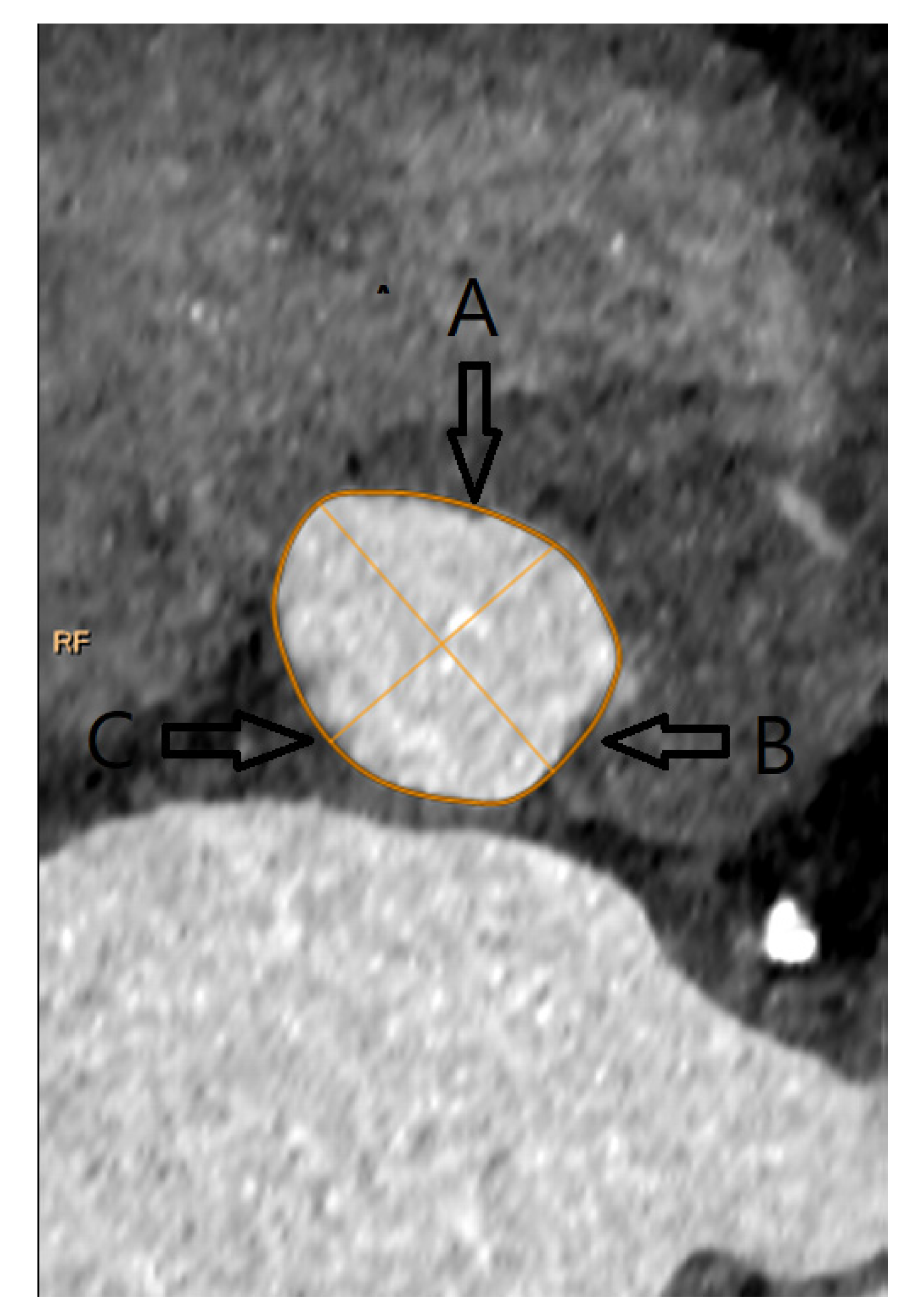
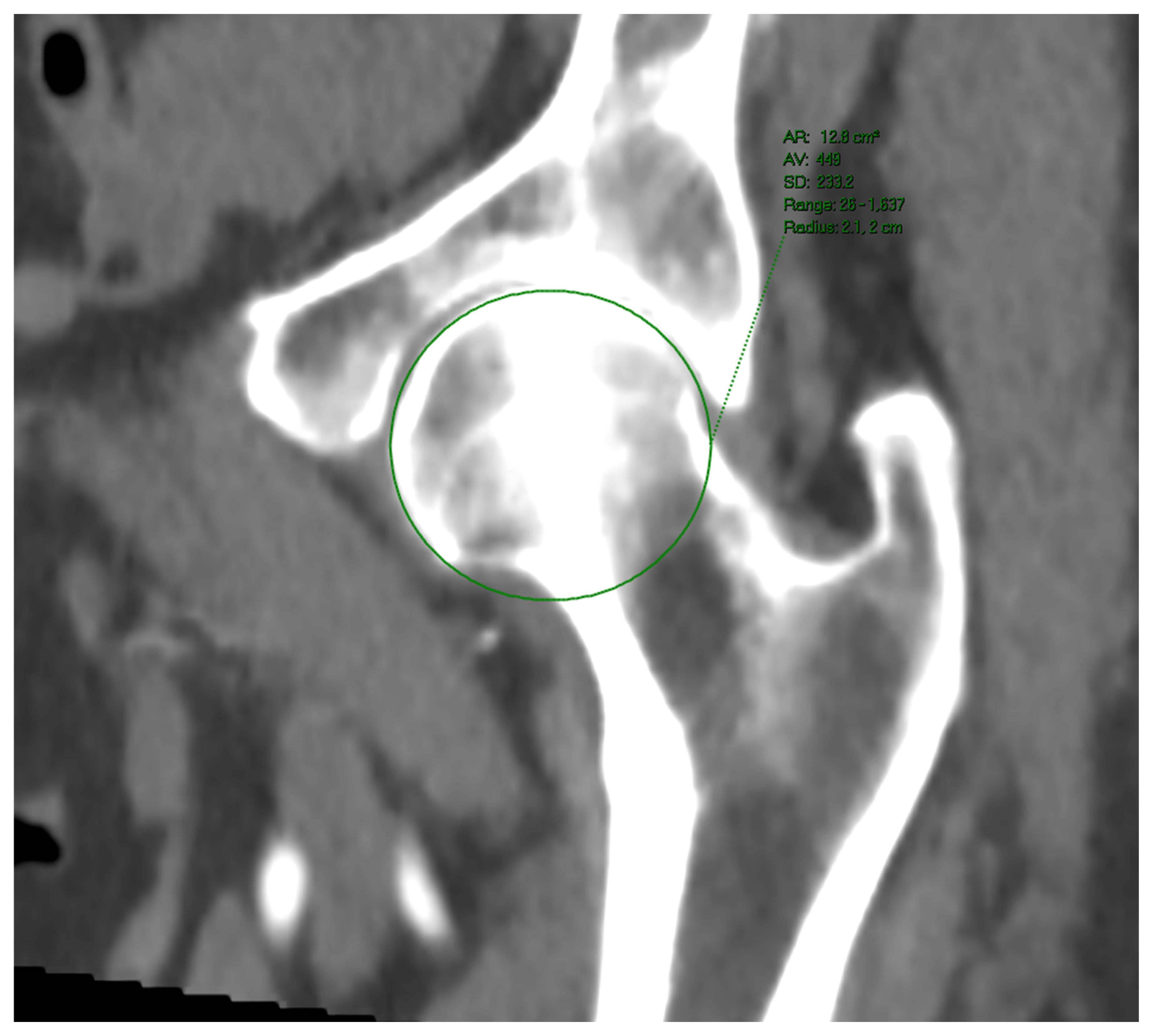
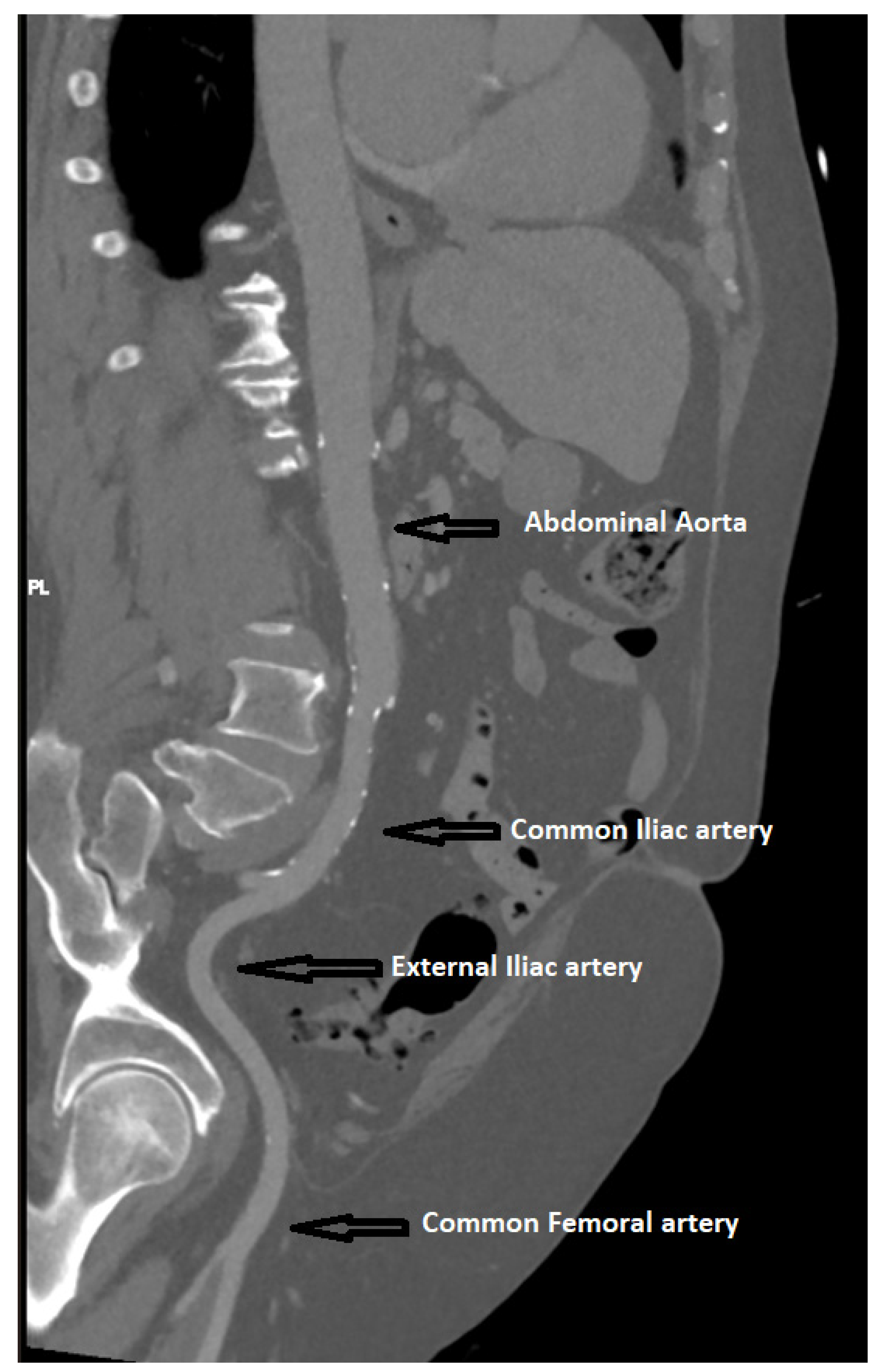


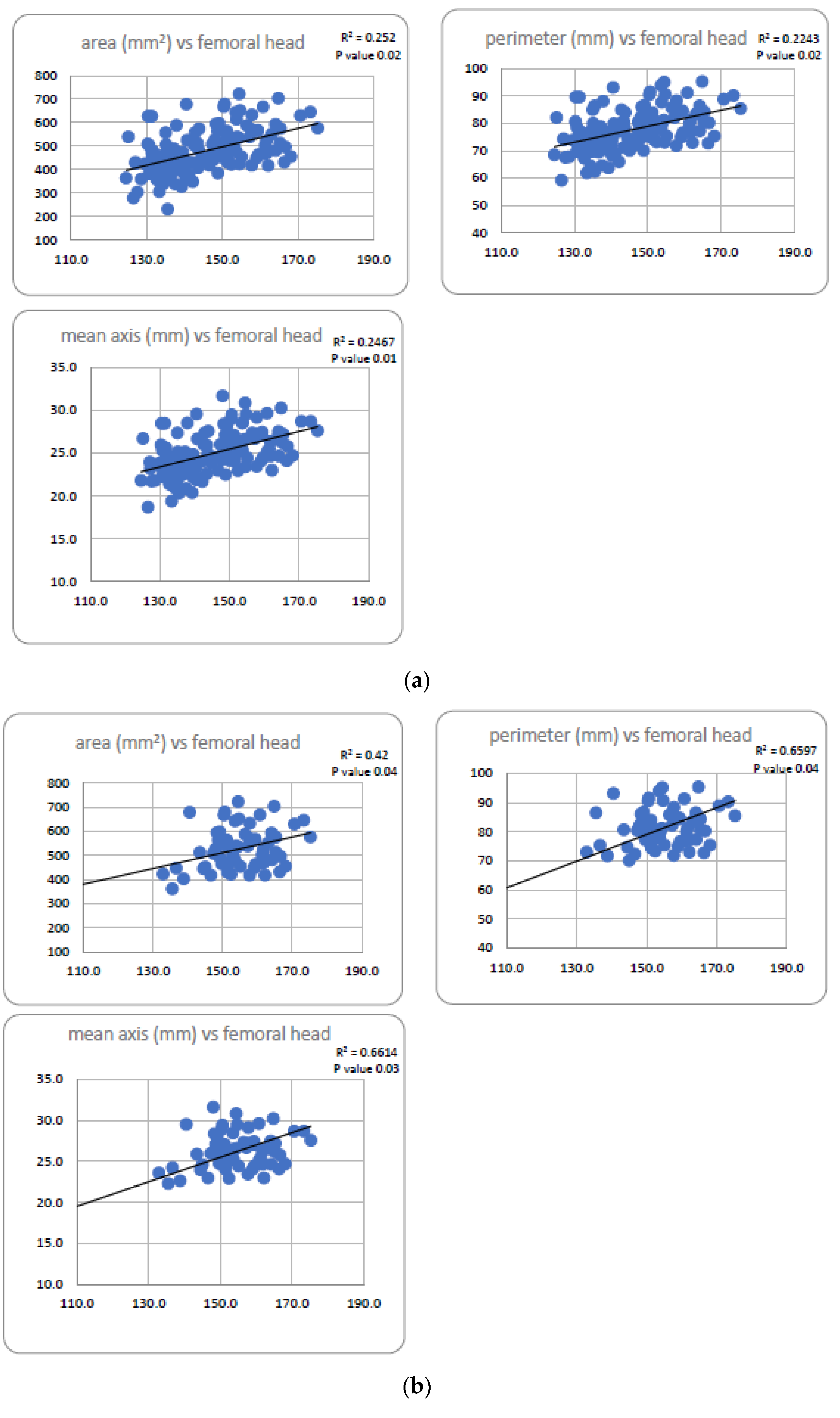
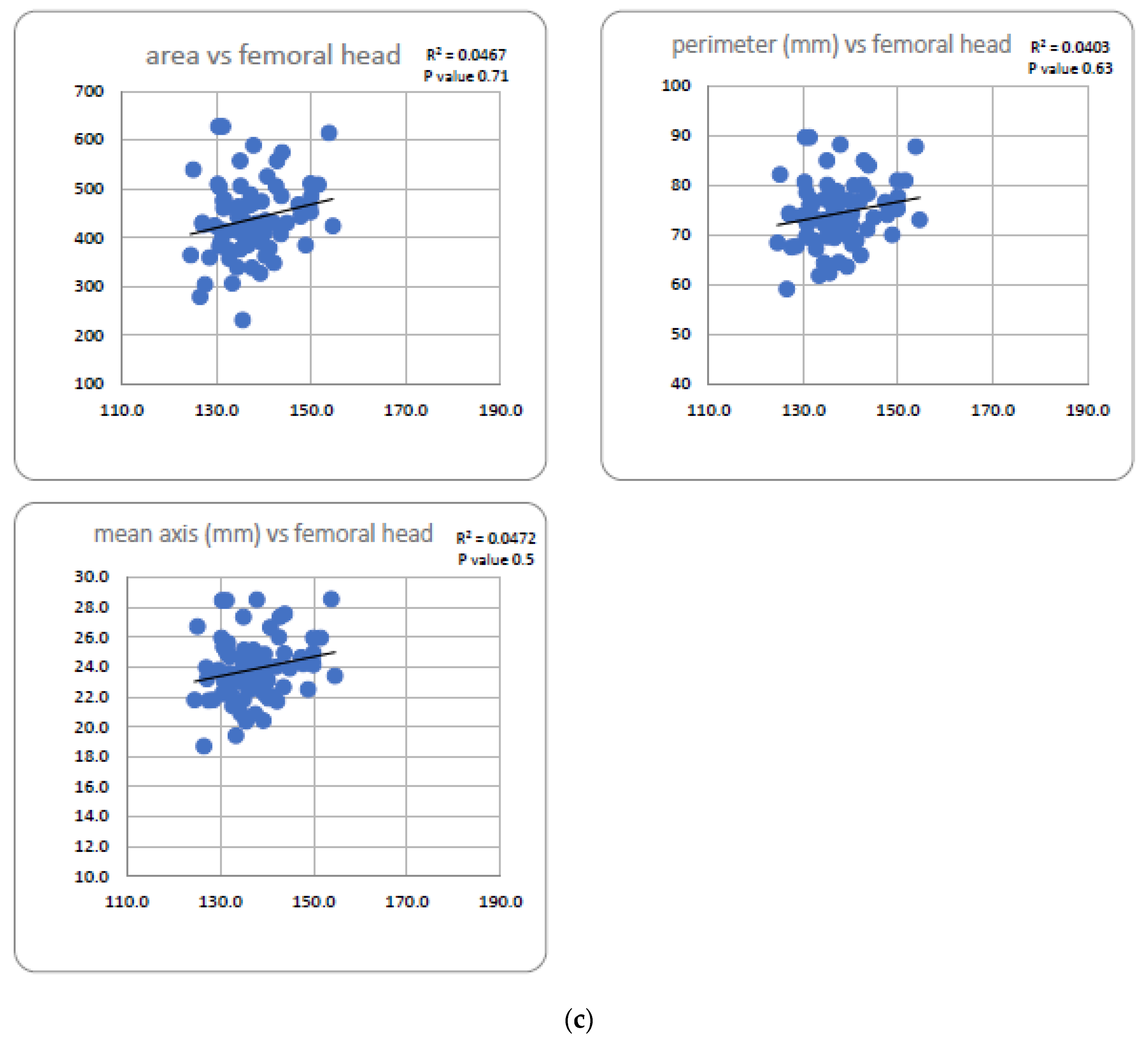
| Total (n = 139) | Male (n = 63) | Female (n = 76) | |
|---|---|---|---|
| Age (years) | 80.7 ± 7 | 81.3 ± 6.1 | 79.6 ± 7.1 |
| Male gender (%) | 63 (45) | ||
| BMI | 29.1 ± 5.6 | 28.6 ± 4.8 | 29.4 ± 6.7 |
| BSA | 1.78 ± 0.2 | 1.87 ± 0.2 | 1.71 ± 0.2 |
| Hypertension (%) | 114 (84) | 55 (87) | 59 (82) |
| Diabetes Melitus (%) | 53 (39) | 25 (40) | 28 (38) |
| Current Smokers (%) | 21 (15) | 12 (19) | 9 (12) |
| OCAD | 67 (50) | 27 (59) | 23 (42) |
| PVD | 32 (24) | 10 (16) | 9 (12) |
| status post-MI | 19 (14) | 11 (17) | 6 (8) |
| Atrial Flutter or Fibrillation | 40 (30) | 18 (29) | 21 (31) |
| s/p PCI | 59 (44) | 32 (51) | 27 (38) |
| s/p CABG | 17 (13) | 10 (17) | 8 (10) |
| s/p CVA | 23 (17) | 13 (27) | 7 (9) |
| COPD | 15 (13) | 4 (7) | 11 (14) |
| CKD 3-5 | 60 (43) | 23 (37) | 21 (31) |
| ACE-I or ARB | 72 (63) | 42 (67) | 48 (67) |
| Beta-blockers | 75 (66) | 40 (63) | 50 (69) |
| diuretics | 57 (50) | 26 (41) | 36 (50) |
| CCB | 25 (22) | 19 (30) | 20 (28) |
| Lipid-lowering drugs | 88 (77) | 55 (87) | 54 (75) |
| Anti-aggregant | 71 (66) | 46 (73) | 44 (61) |
| Anti-coagulants | 36 (32) | 16 (26) | 23 (32) |
Disclaimer/Publisher’s Note: The statements, opinions and data contained in all publications are solely those of the individual author(s) and contributor(s) and not of MDPI and/or the editor(s). MDPI and/or the editor(s) disclaim responsibility for any injury to people or property resulting from any ideas, methods, instructions or products referred to in the content. |
© 2023 by the authors. Licensee MDPI, Basel, Switzerland. This article is an open access article distributed under the terms and conditions of the Creative Commons Attribution (CC BY) license (https://creativecommons.org/licenses/by/4.0/).
Share and Cite
Volodarsky, I.; Perhulov, V.; Gochman, G.; Cuciuc, V.; Welt, M.; Gandelman, G.; George, J. Association of CT-Derived Extracardiac Features and Aortic Annulus Size in Patients Planned for TAVI. J. Pers. Med. 2023, 13, 254. https://doi.org/10.3390/jpm13020254
Volodarsky I, Perhulov V, Gochman G, Cuciuc V, Welt M, Gandelman G, George J. Association of CT-Derived Extracardiac Features and Aortic Annulus Size in Patients Planned for TAVI. Journal of Personalized Medicine. 2023; 13(2):254. https://doi.org/10.3390/jpm13020254
Chicago/Turabian StyleVolodarsky, Igor, Vladimir Perhulov, Galyna Gochman, Valeriu Cuciuc, Michael Welt, Gera Gandelman, and Jacob George. 2023. "Association of CT-Derived Extracardiac Features and Aortic Annulus Size in Patients Planned for TAVI" Journal of Personalized Medicine 13, no. 2: 254. https://doi.org/10.3390/jpm13020254
APA StyleVolodarsky, I., Perhulov, V., Gochman, G., Cuciuc, V., Welt, M., Gandelman, G., & George, J. (2023). Association of CT-Derived Extracardiac Features and Aortic Annulus Size in Patients Planned for TAVI. Journal of Personalized Medicine, 13(2), 254. https://doi.org/10.3390/jpm13020254




